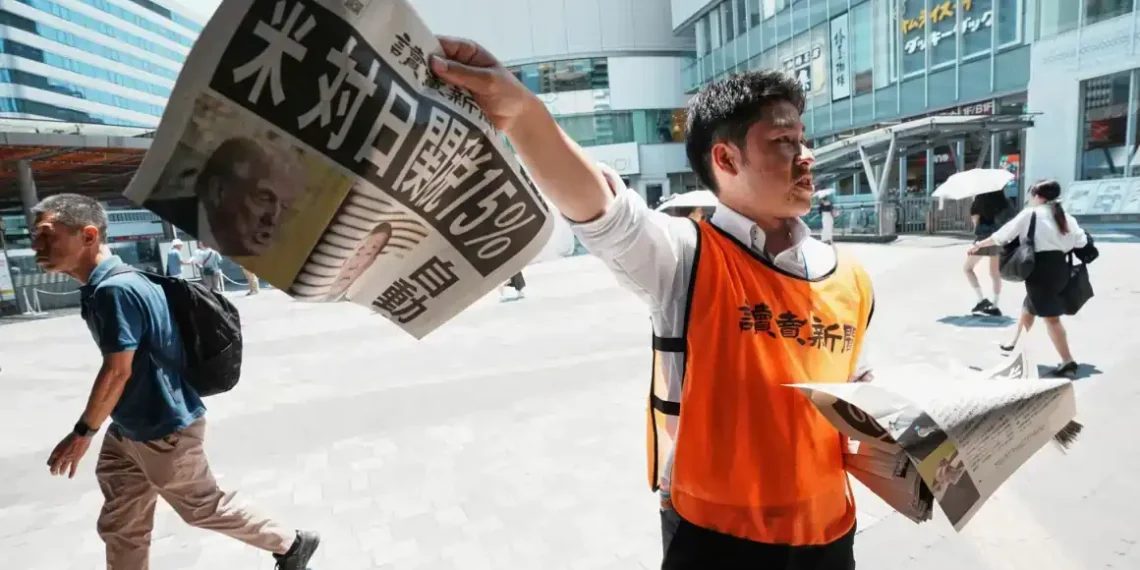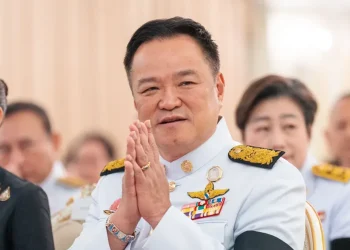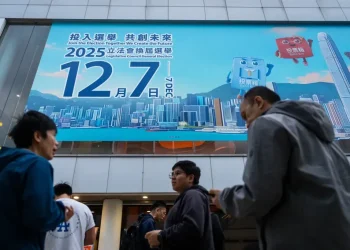A New Trade Agreement Between the U.S. and Japan Aims to Boost Jobs and Investment
Trump Announces New Trade Deal with Japan, Lowers Tariff to 15%
President Donald Trump has announced a new trade deal with Japan that will lower tariffs on Japanese goods to 15%. The agreement also includes promises of major investments in the U.S. and better access for American products in Japan. The deal is part of a broader effort by the Trump administration to reshape global trade and reduce America’s trade deficits.
Here’s what you need to know about the deal, why it matters, and how it fits into Trump’s larger trade strategy.
What’s in the New U.S.-Japan Trade Deal?
The new trade agreement includes a few major points:
- A 15% tariff will be placed on Japanese imports to the U.S.
- Japan has pledged to invest $550 billion in the U.S.
- Japan will open its markets to American-made automobiles and rice.
Trump described the deal as historic, writing on Truth Social:
“This Deal will create Hundreds of Thousands of Jobs — There has never been anything like it.”
The 15% tariff is a reduction from the 25% rate that Trump had earlier threatened to impose starting August 1. That higher rate had caused concern in the markets when it was first announced.
Japanese Prime Minister Shigeru Ishiba responded to the announcement early Wednesday, calling the agreement a positive step for both countries.
Why This Matters for the U.S. Economy
Trump is using this deal to highlight his reputation as a strong negotiator. His administration argues that tariffs and trade pressure can help bring investment back to the U.S., create jobs, and reduce America’s large trade deficits.
The U.S. had a $69.4 billion goods trade imbalance with Japan last year, meaning it imported far more than it exported. Trump wants to reverse that by encouraging companies to build factories in the U.S. instead of overseas.
Treasury Secretary Scott Bessent echoed this goal in a recent TV interview, saying:
“President Trump is remaking the U.S. into a manufacturing economy.”
Impact of Tariffs Still Unclear
While Trump’s trade team says the tariffs will benefit the U.S., the broader impact is still uncertain. Some businesses and economists warn that the tariffs could lead to higher prices for American consumers and companies.
This concern showed up in real numbers this week. On Tuesday, General Motors reported a 35% drop in its net income for the second quarter and blamed tariffs for hurting its business. The company’s stock fell after the announcement.
So far, the markets have settled since the initial panic in April when tariffs were first floated. But worries about long-term economic effects remain.
Trump Also Announces New Tariffs on the Philippines and Indonesia
In addition to the Japan deal, Trump said the U.S. would move forward with a trade agreement with the Philippines. That plan includes:
- A 19% tariff on Philippine imports
- No tariffs on U.S. goods entering the Philippines
Trump also reaffirmed a 19% tariff on goods from Indonesia. Both countries have significant trade imbalances with the U.S. — $4.9 billion with the Philippines and $17.9 billion with Indonesia, according to the U.S. Census Bureau.
These new tariffs are part of a wave of global trade actions that are set to take effect on August 1, based on letters Trump sent to world leaders.
What’s Next? Trade Talks with Europe and China
The Trump administration is also preparing for high-stakes negotiations with the European Union. On Tuesday night, Trump said that EU officials would arrive in Washington the next day to discuss trade.
Earlier this month, Trump threatened the EU with a 30% tariff on its goods if a deal isn’t reached by August 1.
Talks with China are following a different timeline. Tariffs on Chinese goods currently sit at 30%, and both sides have until August 12 to negotiate further.
Treasury Secretary Bessent is scheduled to meet with Chinese officials next week in Stockholm, Sweden. His goal, he said, is to rebalance the global economy by encouraging more U.S. manufacturing and more Chinese consumer spending.
Bottom Line
President Trump’s new trade deal with Japan marks a significant move in his global trade strategy. By lowering tariffs from 25% to 15% and securing investment promises, he’s positioning the deal as a win for American workers and businesses.
But with broader tariff threats still looming — and companies like GM already feeling the effects — it remains to be seen how these changes will play out across the economy. The coming weeks will bring more talks with Europe and China, and potentially more changes to the way the U.S. trades with the world.
This article was rewritten by JournosNews.com based on verified reporting from trusted sources. The content has been independently reviewed, fact-checked, and edited for accuracy, neutrality, tone, and global readability in accordance with Google News and AdSense standards.
All opinions, quotes, or statements from contributors, experts, or sourced organizations do not necessarily reflect the views of JournosNews.com. JournosNews.com maintains full editorial independence from any external funders, sponsors, or organizations.
Stay informed with JournosNews.com — your trusted source for verified global reporting and in-depth analysis. Follow us on Google News, BlueSky, and X for real-time updates.














